The North American B-25 “Mitchell” was introduced first back in 1941 as the medium-range bomber to serve the aviation unit of the US military. The aircraft was named after famed military personnel named Major General William Billy Mitchell who happened to be the pioneer for the aviation in the US military.
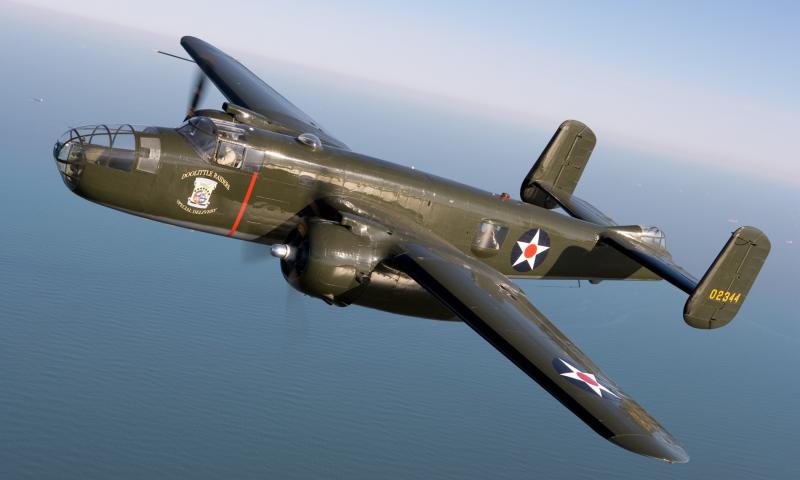
The aircraft after its first flight went on to serve many of the allied forces and most notably performed action in nearly every theater of World War II. Even after the war, the North American B-25 “Mitchell” proved to be a capable aerial asset for Air Forces and remained in service for another 4 decades. Numerous variants for this one of a kind bomber were created and all in all nearly 10000 of these North American B-25 “Mitchells” were manufactured. Some of the variants include the limited models like the F-10 which was a reconnaissance aircraft, the AT-24, which was a crew trainer and the PBJ-1, which was a patrol bomber serving the United States Marine Corps.
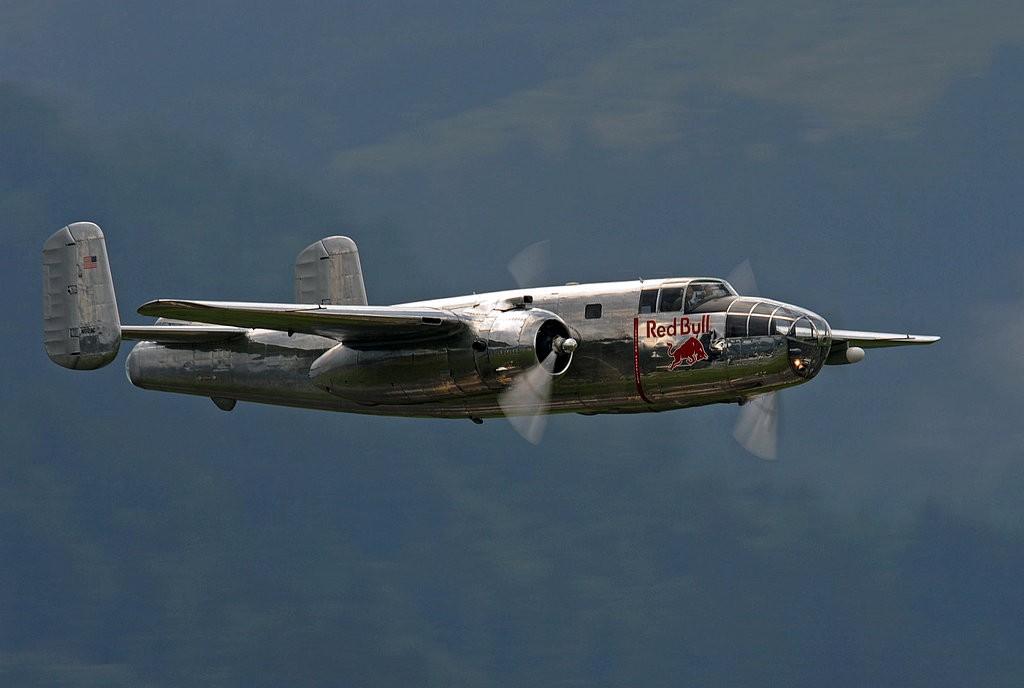
For our readers, we decided to present to you some of the amazing facts about the North American B-25 “Mitchell” which made its name not only during World War II but also afterward.
Service to Allied Forces in World War II
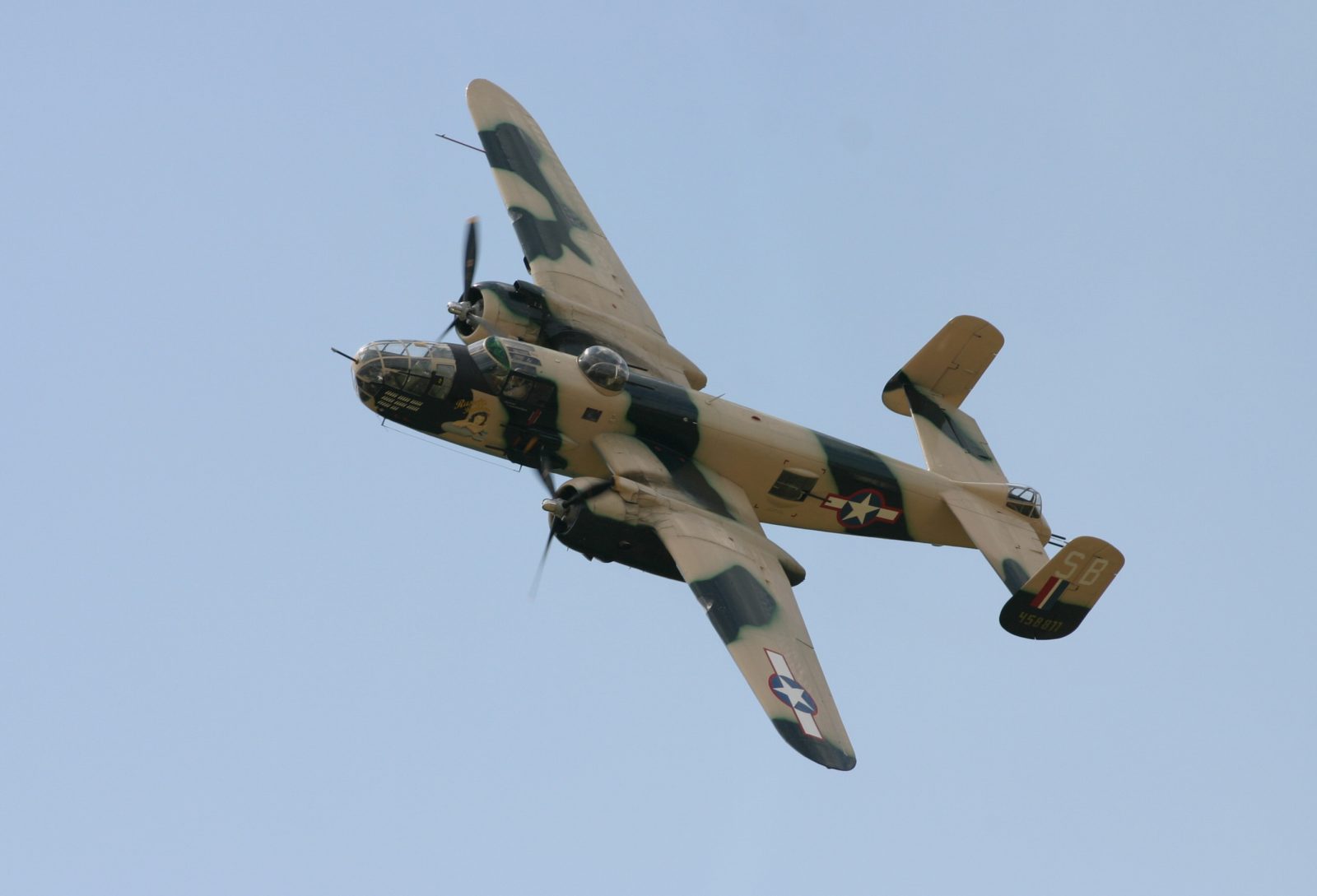
It is hard to find any other aircraft and especially a bomber aircraft that is as much renowned as the North American B-25 “Mitchell” in the era of World War II. This bomber went on to be one of the mass-produced bombers and was versatile in its functioning which allowed for it to be used by numerous allied forces’ countries. Due to its service across the world, the North American B-25 “Mitchell” became one of the highly recognized bomber aircraft in the world.
Named after a famed military personnel
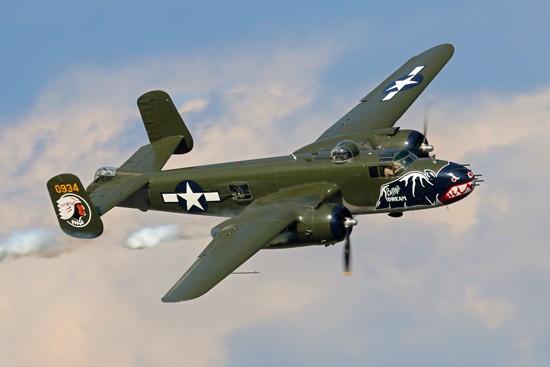
The North American B-25 “Mitchell” was given its name after the pioneer of the military aviation in the US; Major General William Billy Mitchell. The North American B-25 “Mitchell” was a twin-engine propeller-driven bomber which over the course of its life transformed into more than a simple bomber. The aircraft went on to serve the following roles after World War II.
- Bomber
- Submarine patrol aircraft
- Photo reconnaissance aircraft
- A fighter aircraft
The fact that as to why the North American B-25 “Mitchell” is one of the most recognized aircraft in the world is evident from this small factoid that in the span of only 6 years in between 1939 to 1945, North American Aviation, the company behind the B-25 “Mitchell” manufactured nearly 10000 of these aircraft.
Development History
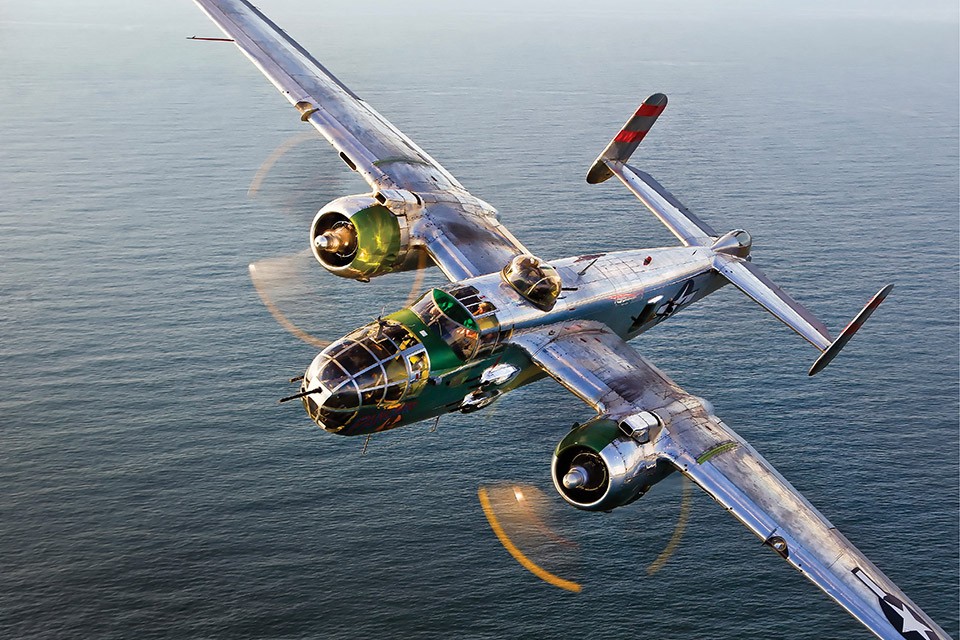
The very first flight of the North American B-25 “Mitchell” was back in the August 1940. Following the success of the first operational test flight, the US Army Air Corps, the main aviation unit of the US military at that time, accepted their delivery of the 5 North American B-25 “Mitchells” in February 1941. After this delivery of the first 5, the North American aviation was on a tight schedule to develop as many of these North American B-25 “Mitchells” as they could. North American Aviation during that time only had 2 plants, one was in Kansas and the other one was at California, form these two plants a total of 9816 B-25s came out.
Built for other countries

Before it was North American B-25 “Mitchell” it was known by the designation NA-40 back in the mid-1930s. The name only changed after the aircraft was fitted with the Wright R-2600 radial engines. The design of the NA-40 was made while keeping in view the needs of the UK and France. During that time, both these countries were in an urgent need of a bomber aircraft because these countries were on the verge of getting ensnared into the full-blown war. However, both these European countries at that time refused the project of NA-40 and instead went on to use the Douglas DB-7 which when in US military’s service was designated as A-20.
Acknowledged during Tokyo Raid
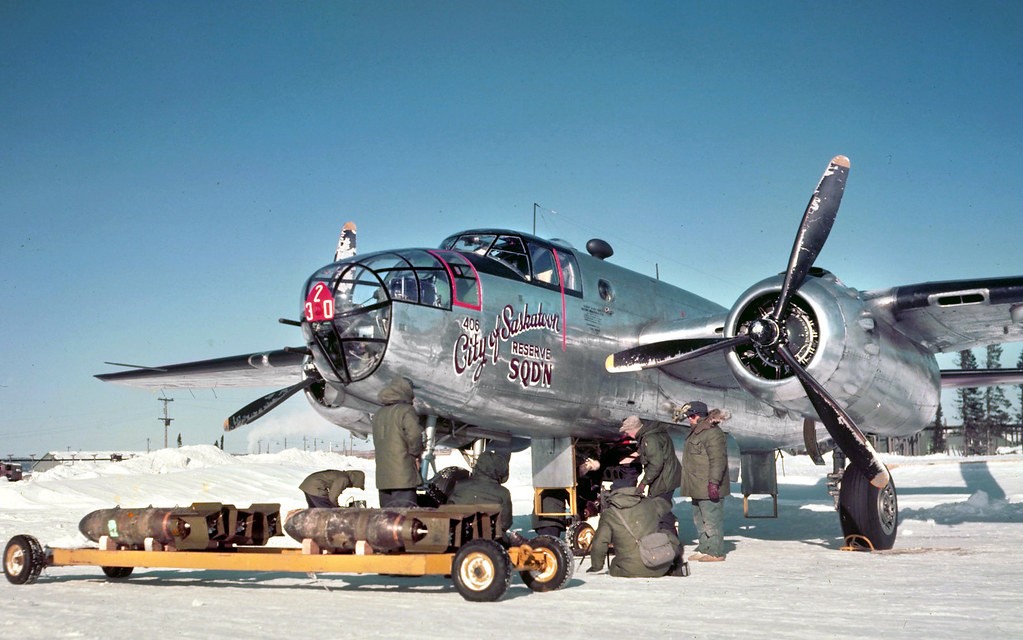
After the UK and France opted to go with DB-7, the sales of the aircraft went down the drain but then the US Army Air Corps saw the potential of the aircraft as a medium-range bomber a year later and ordered for its production as per their needs. Due to World War II being heated up exponentially, the North American Aviation had no time to waste with test runs or the experimental designs. Any modifications that were needed in the design of the NA-40 to make it the North American B-25 “Mitchell”, they were made during the production line. As for other variants of the North American B-25 “Mitchell”, they were produced on urgent bases as well.
The very first mission that made the North American B-25 “Mitchell” renowned across the globe even in the limited communicational technology era was the successful mission of Tokyo Raid that was carried out by the pilot General Jimmy Doolittle.
Armaments
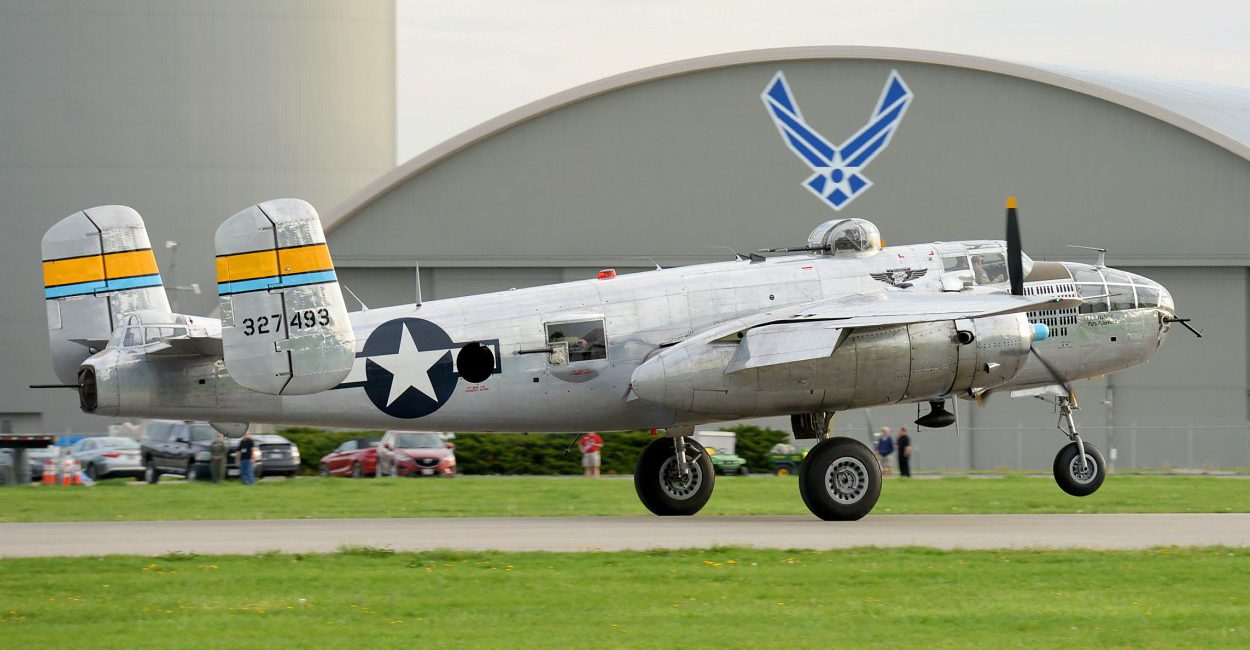
There were many models of the North American B-25 “Mitchell” and each of them came with their own special weapons system. The model G was the first major model of the B-25 that was equipped to have 1 cannon of 75 mm along with 2 .50 caliber guns fixed on its nose.
The model J of the B0-25 was the one that was mass-produced and was level bomber aircraft which had the original design. It only had a slight change in its design that was to have a transparent nose along with 2 of the .50 caliber guns fixed on its nose.
As for the H mole of the B-25, it came with two .50 caliber forward-firing guns placed on its cheek blisters.
Powerplant and other specs
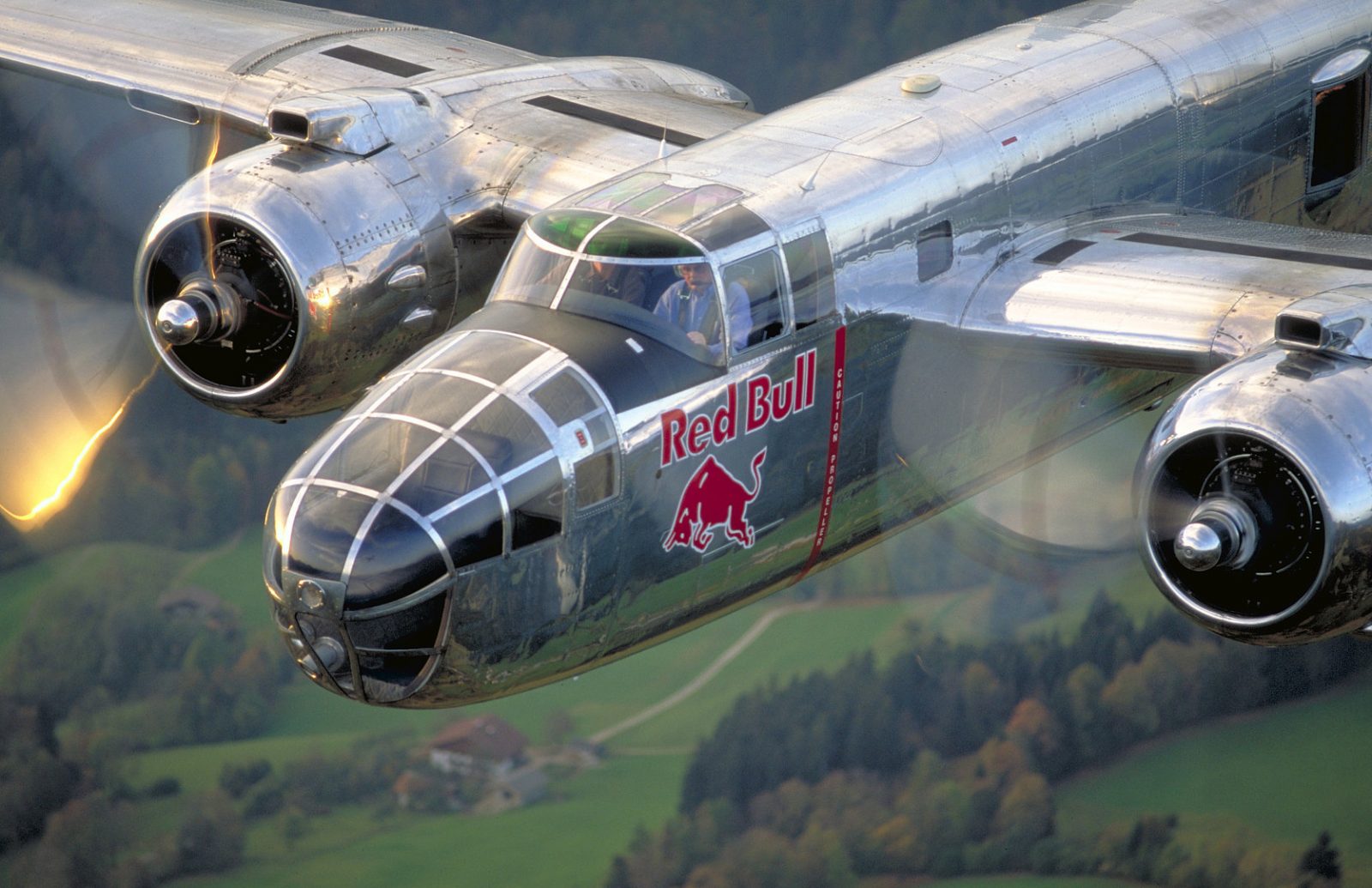
A single one of the North American B-25 “Mitchell” was powered by twin Wright Cyclone supercharged 14-cylinder radial engines that had a power generation of nearly 1700 hp. This much power allowed for the aircraft to be propelled at a top speed of 300 mph at an altitude of 21200 feet for a combat range of 3000 miles. As for the flight crew of the Wright Cyclone supercharged 14-cylinder radial engines, it had 5 of the following members.
- Pilot
- Co-pilot
- Bombardier
- Radio operator
- Gunner
The B-25 Mitchell was able to carry a bombing payload of nearly 3000 lbs. During that time; a single B-25 had a cost of about 109670 dollars.
Related Content
Interesting facts about the McDonnell Douglas F-4 Phantom II; The fighter Bomber
Interesting facts about the Boeing EA-18G Growler; The Electronic Warfare Aircraft

